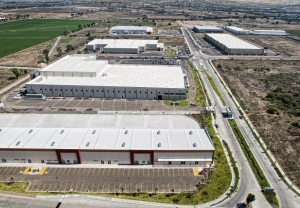Inland Port Districts
 Depending on the geographic circumstance and market situation, increasingly there are cases for an expanding supply chain role for strategic logistics hubs that are part of a global market-domestic seaport-inland market system. Typically but not necessarily exclusively these assets are connected by rail and benefitted by hub and spoke efficiencies. In the right locations, there are cases where these hubs can compete as locations for manufacturing investment.
Depending on the geographic circumstance and market situation, increasingly there are cases for an expanding supply chain role for strategic logistics hubs that are part of a global market-domestic seaport-inland market system. Typically but not necessarily exclusively these assets are connected by rail and benefitted by hub and spoke efficiencies. In the right locations, there are cases where these hubs can compete as locations for manufacturing investment.
Whether moving product inbound or outbound, we have witnessed a range of shippers that have sought a variety of value-add advantages in these hubs over non-logistics advantaged sites, including:
Proven Bottom-Line Value
 These kinds of advantages can be extraordinarily valuable in a way that can have proven bottom-line value.
These kinds of advantages can be extraordinarily valuable in a way that can have proven bottom-line value.
Our firm understands cargo movement and logistics, but more importantly we understand sector supply chains, what they are today and what their requirements will be in the future. Our job is to add market science to help increase revenues, recognize competition and pinpoint a justifiable infrastructure development plan.
GLDPartners combines the value of its relationships, sector knowledge, competitiveness analytics and supply chain expertise to asset owner developments associated with rail-truck (sometimes air) intermodal projects.
GLDPartners helps asset owners understand, measure and act on future business demand and match to development strategies. Fundamental to this is to understand the market in the near-term and then how that market will evolve given supply chain changes and competition.
